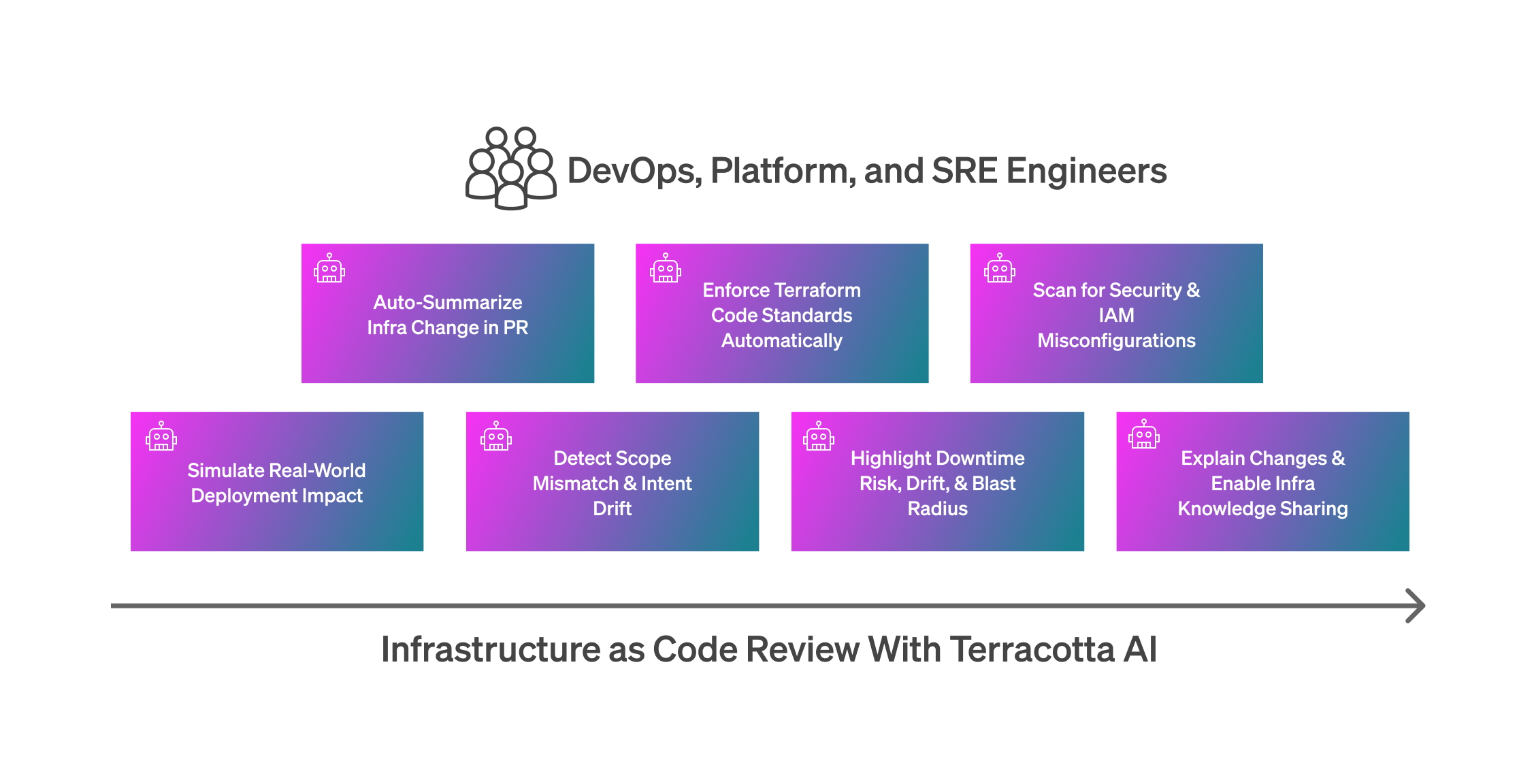How AI Terraform Code Reviews Make Deploying Infra Safer and Transparent, Reclaiming Your Team's Time

Manual Reviews Are the Bottleneck You Can’t See
Your infrastructure pipeline might be fully automated. You’ve got CI/CD in place, maybe even self-service deploys. But everything slows down when a pull request is opened for a Terraform change.
Suddenly, it’s a game of ping-pong.
"Who can review this?"
"Do we know what this is going to do?"
"Is it safe to merge?"
Pull requests pile up, waiting for context. Diffs are long, often noisy, and hard to interpret without deep tribal knowledge. Even worse—small changes can hide big consequences. A typo in a resource name? That’s a destroy-and-recreate scenario. Swapping an EC2 instance type? Sounds safe—unless it triggers a downtime window.
In this world, your senior engineers become human interpreters of Terraform diffs. They’re the only ones who can answer the scariest question in DevOps:
“What will this actually do when we apply it?”

Simulation: Knowing Before You Deploy
Terracotta was built around a simple premise: code reviews should be as reliable as your deployment automation. That’s why Terracotta doesn’t just scan your code—it simulates your deployment in the context of your real infrastructure.
Before anything gets merged, Terracotta:
- Runs a simulated Terraform plan based on the latest state
- Pulls in cloud resource metadata for additional context
- Identifies what’s going to be created, modified, or destroyed
- Cross-references current infrastructure to spot unintentional changes or hidden risks
Instead of hand-waving over terraform plan output or hoping someone notices the danger signs, Terracotta shows reviewers precisely what will happen—with context, warnings, and recommendations.
It’s like having an automated pre-flight check on every PR that everyone can understand.

AI Reviews Let Your Team Ship Without Fear
Terracotta’s Contextual AI Pull Request Reviews act like a staff engineer embedded in every PR. It reads your code, understands what’s changing, and highlights what’s risky—all in plain language.
In a typical Terracotta-enhanced review, you’ll see:
- 📌 Change summaries written in human language
- 🚨 Risk annotations like destructive operations, potential downtime, and blast radius warnings
- 🔍 Drift detection between what’s deployed and what’s in code
- 🔗 State-aware context—no more jumping between tabs to find resource histories or plan files
Instead of parsing raw diffs and Terraform plan logs, reviewers get a curated, context-rich explanation. The difference is clarity—and speed.
What a Terracotta AI Review Looks Like
Let’s say someone opens a PR changing an RDS instance size:
instance_class = "db.t3.medium" → "db.m5.large"At a glance, it looks safe. But Terracotta’s review goes deeper:
“This change will trigger a resource replacement forprod-db. Estimated downtime: 2-5 minutes. This instance has 10 downstream dependencies. Consider usingapply_immediately=falseor exploring themodifypath instead.”
It doesn’t stop there. Terracotta checks:
- Whether this drifted from the live infrastructure
- If previous changes to this resource caused downtime
- Whether this type of change violates guardrails or policy constraints
- If this change has been rolled back in previous commits
In short, it becomes a conversation starter, not a guessing game.
Works With Atlantis, Terragrunt, and Everything in Between
Already have a Terraform pipeline with Atlantis, Terragrunt, Spacelift, or something homegrown? No problem.
Terracotta was designed to layer on top of your existing workflows—without requiring you to replace or refactor them. It works by:
- Plugging into your GitHub or GitLab pull requests
- Pulling remote Terraform state from your backends
- Using read-only access to simulate and analyze plans
- Posting contextual summaries, warnings, and metadata directly in PRs
Whether you run Atlantis plans in GitOps, or wrap Terraform in custom Terragrunt modules, Terracotta will understand the layout, simulate the changes, and bring clarity into the PR review.
It's not a replacement. It’s a power-up.
Why Terracotta Is Different
Most tools either lint your Terraform or parse plan files. Terracotta goes a level deeper—it understands your infrastructure.
By connecting to your cloud provider and Terraform state, Terracotta knows not just what the code says—but what it will do, and how it relates to your broader architecture.
It catches things like:
- Inconsistencies between actual infra and your state files
- Untagged or orphaned resources being accidentally deleted
- Cross-service dependencies that could be impacted
- Past drift history or rollback patterns for specific modules
It’s like having your staff SRE sit down and walk through the PR with you—except it’s automated, objective, and instant.
Your Senior Engineers Deserve Better
When your lead engineers are stuck doing code archaeology on Terraform diffs, that’s a signal that your process has friction—and it’s costing you.
Terracotta frees them to focus on system design, architecture, and higher-leverage work. Meanwhile, junior engineers gain access to rich contextual explanations that help them understand the “why,” not just the “what.”
You build faster. You build safer. And most importantly, you build without fear.
Want to make every infrastructure PR a confident deployment?
👉 Try Terracotta AI





Comments ()